Salar de Uyuni is the world’s largest salt flat, spanning 4086 square miles (10,582 sq. km) in south-western Bolivia. Unlike traditional deserts, which have sand in abundance, the Salar de Uyuni features vast expanses of glistening white salt. The landscape is entirely flat, bar a few small ‘islands’ such as Isla Incahuasi, which only accentuates its surreal beauty. Underneath the cemented salt are large reservoirs of lithium-rich brine. In fact, approximately 70% of the world’s lithium reserves are found in Salar de Uyuni and thus it’s not surprising that there’s an entire industry devoted to its extraction. Unlike any other place on earth, the Salar de Uyuni is breathtakingly beautiful and provides an extraordinary experience that will not be quickly forgotten.
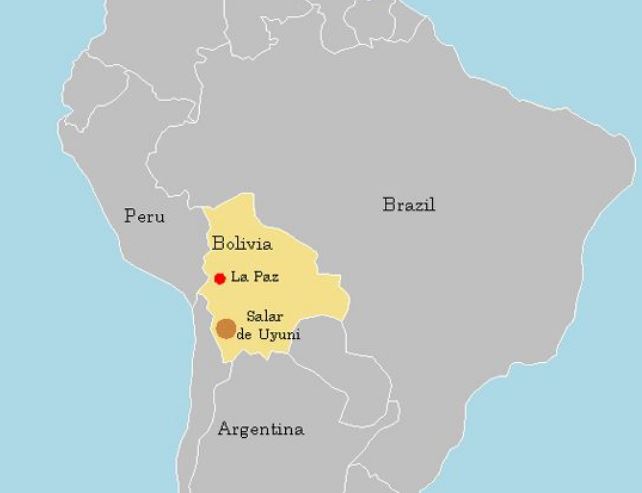
The formation of Salar de Uyuni
Containing an estimated 10 billion tonnes of salt, the question often arises as to how Salar de Uyuni was formed. Essentially, the Altiplano (high plateau) here had no drainage outlets, which meant that water from the surrounding mountains once collated to form a giant lake. High salinity meant that whilst this vast, prehistoric lake has long since evaporated under the fierce Andean sun, a thick crust of salt remains, forming what we now recognise as the salt flats of Salar de Uyuni.
Aymaran legend provides an alternative explanation, involving the mountains surrounding the salt flats, Kusina, Kusku and Tunupa. The story is that these mountains were once giant people, and Tunupa and Kusku were married. When Kusku betrayed his wife for Kusina, Tunupa’s tears are said to have formed the salt flats.
Experiencing Salar de Uyuni
The best and most popular way to fully experience Salar de Uyuni is by taking a 4×4 tour across the salt flats. It’s worth noting that shared tours usually accommodate for up to 6 tourists, and thus for a more comfortable experience, a private tour should be arranged. Such tours usually involve a minimum of one night’s stay in rather basic accommodation, and thus it is recommended that you bring plenty of warm clothes and a warm sleeping bag for the night. Further, sun cream is a necessity as the reflections from the salt accentuate the sun’s effect.
Adventurous travellers may also wish to try a night’s stay in one of the areas renowned salt hotels. With no building materials around for miles, some locals have taken it upon themselves to build structures from bricks of cemented salt. In these hotels, everything from the beds and tables to the flush toilets are constructed from salt blocks. Even if you don’t fancy staying, you can usually view these hotels during the day for a nominal fee.
In the dry season, Salar de Uyuni is a surreal experience not to be missed. However, rain takes it to a whole new level. As a thin sheet of water covers the flats, it reflects a perfect representation of the sky above so that it is impossible to tell where the sky ends and the land begins.
Best time to visit Salar de Uyuni
The best time to visit Salar de Uyuni ultimately depends upon the experience you are looking for. For the best climate, we recommend you visit between July and October. However, for an increased chance of seeing the reflective surfaces, you should visit between March and April.
How to get to Salar de Uyuni
Most tours to Salar de Uyuni originate from the small town of Uyuni. To get to Uyuni, you have a number of options available to you. Most people choose to travel from Ororo, where it is 7 hours by train, or 8 hours by bus. These tickets are quite often booked up on the day, so it is recommended to book in advance. Alternatively, you can take a bus from La Paz (12-15 hours) or Potosi (6-7 hours). Lastly, you can choose to rent a car or fly into Uyuni’s small airport from La Paz.
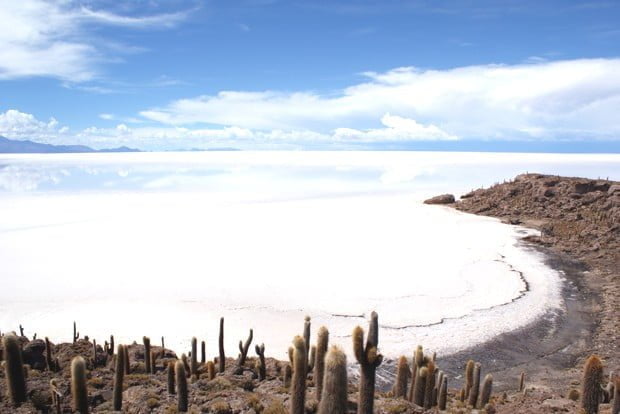
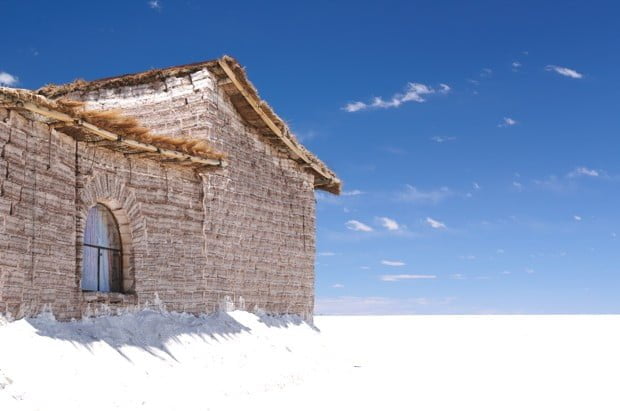
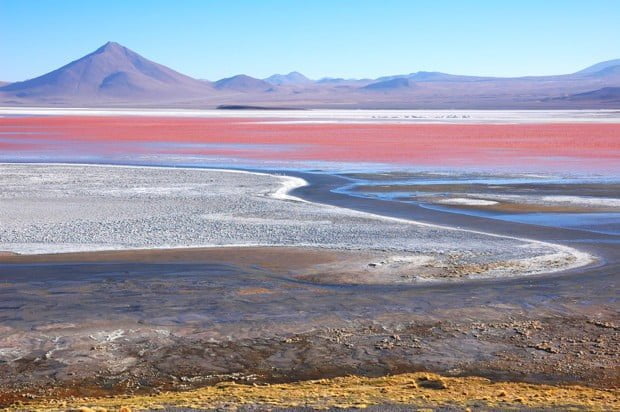

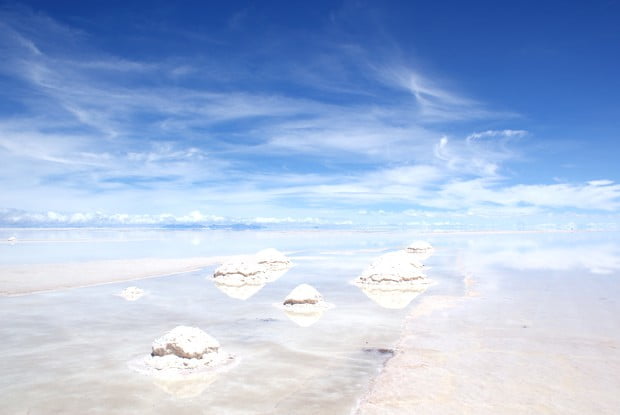
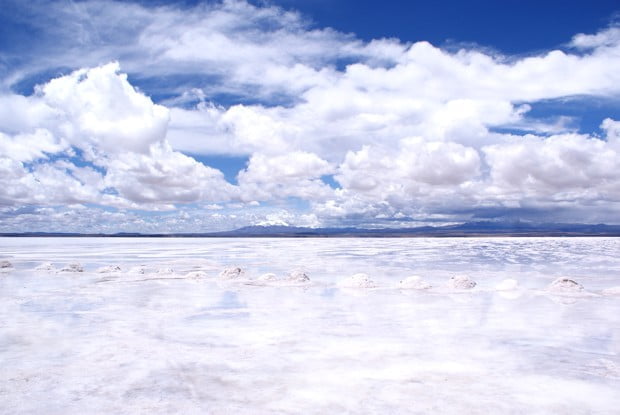
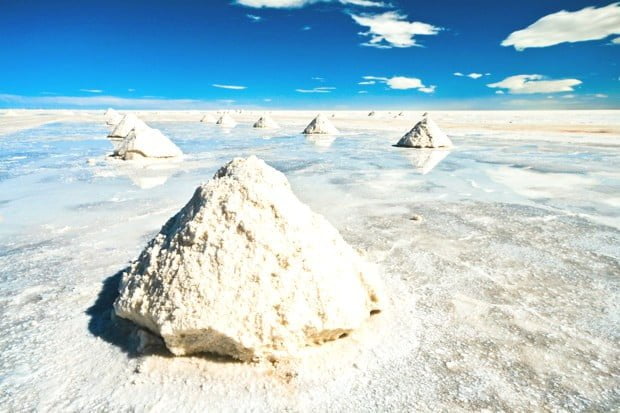

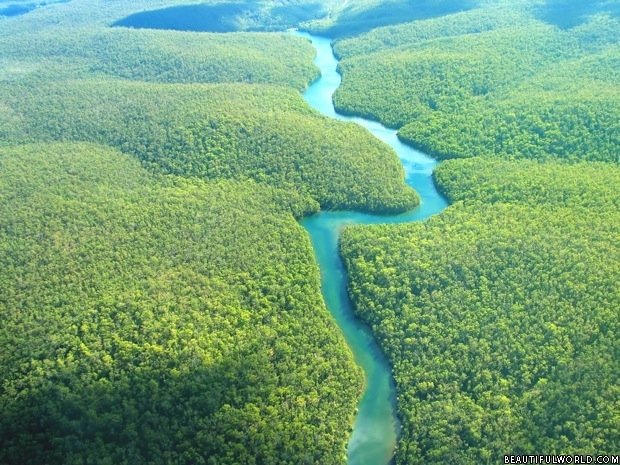


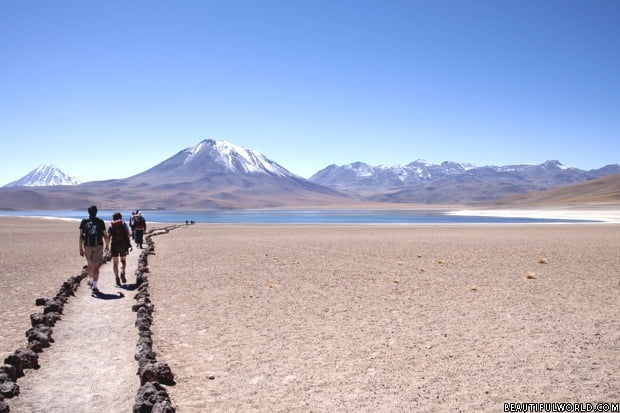
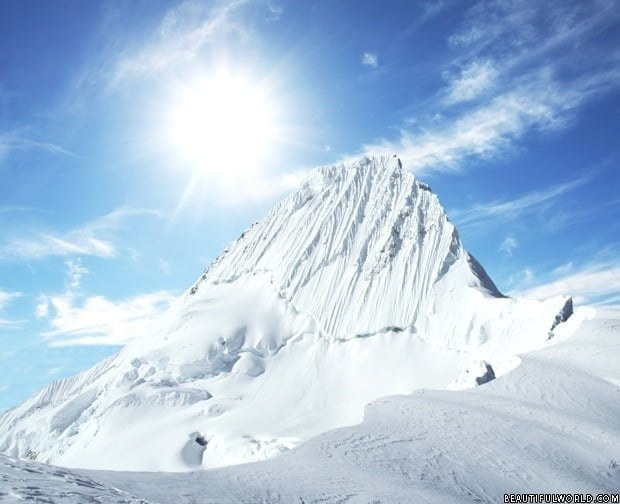
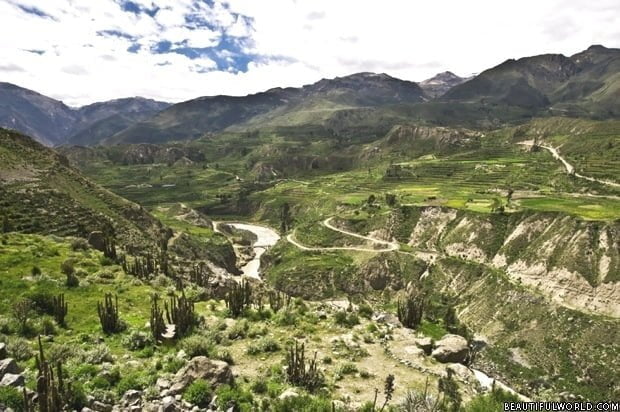
when is the best time to visit to see the reflective visions I see in the photos? Any tour guide recommendations?
The sun is bright at this time of the year (June and July), and the sky is true blue. It feels cold
but is not, is a little nippy. If possible when you go there, try to get a tour guide at the site, they
now a lot and some of them speak english.
i didnt learn any about the history of Salar De Uyuni.
Why are there so many cracks in the ground?
Better move fast. Elon Musk’s desire for all the lithium on the planet will not be easily satisfied. Whatever it looks like now…it won’t for much longer sadly.
Imagine the biggest thing you can, being consumed as fast as you can. This is unthinkably bigger than that. Lithium is more abundant than nitrogen is, about as abundant as chlorine… which is to say, there’s a hell of a lot of it just in this one spot.
How much? Assuming that the playa has a surface area of 4,000 square miles and is 5M deep, and that lithium comprises 5% of it (which is probably a pretty conservative estimate), there are 1.4 billion metric tons of lithium metal present… that’s a cube 2.6 kilometers on a side, or in the form of 3500mAH 18650 cells, 1.3 trillion batteries. Put end-to-end, it would form a stack 4.8 light-minutes long, a bit more than halfway from the Earth to the Sun. In the form of Tesla Model 3’s, which use 5,376 of this type of cell, this represents 245 billion cars, enough to supply about two and a half cars to every human who has ever lived since the dawn of our species. Laid bumper-to-bumper that’s a string of cars about 64 light-minutes long, about the radius of Saturn’s orbit. If you were to drive each of these cars in turn for it’s standard range of of 354km, you’d be able to make it 2,811 parsecs one-way, enough range to make it to the Carina Nebula. Unfortunately, at a Model 3’s top speed, it’s going to take you 1.83 billion years to get there, so… you may want to pack a few snacks. Not sure if that’s worth it, but I hear Eta Carinae is beautiful this time of year.